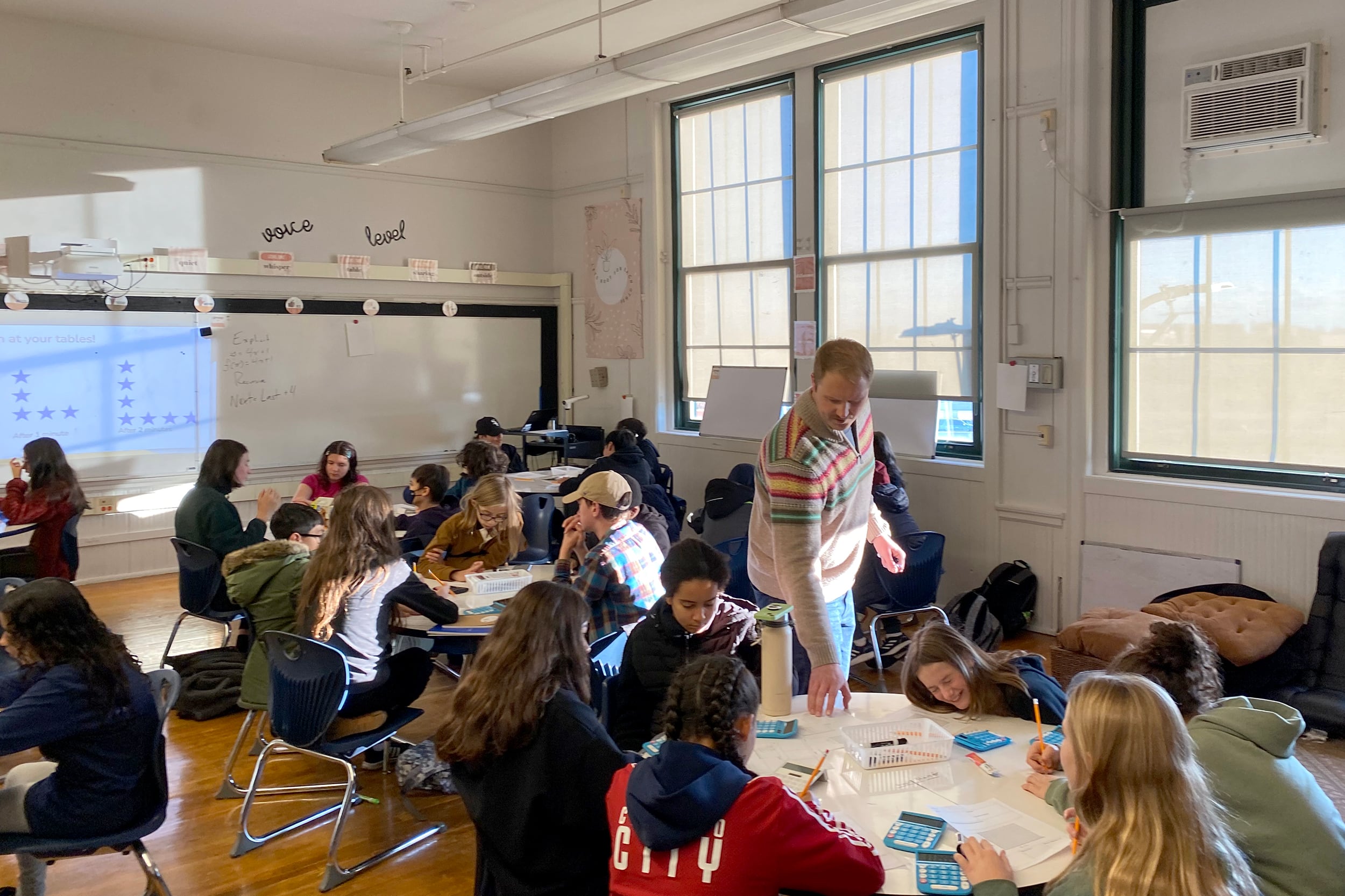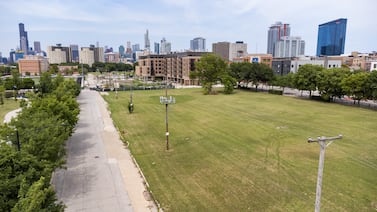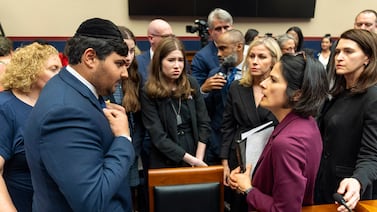Sign up for Chalkbeat Chicago’s free daily newsletter to keep up with the latest education news.
Illinois will not be able to adequately fund public schools by a 2027 state deadline, according to a new report.
Due to inflation and state lawmakers holding K-12 funding flat in 2020 during the height of the COVID pandemic, districts would not be adequately funded until 2034 if the state continues to only add $350 million to the evidence-based funding formula, according to a report from the Center for Tax and Budget Accountability.
But lawmakers could adequately fund schools by 2030 if they provide an additional $500 million a year, the report said.
However, state budget officials are predicting a decrease in revenue in the next year. Federal COVID-19 relief money, which boosted school budgets the past few years, is also set to run out.
“I think school districts will have to make some tough financial decisions in the next coming years,” said Elaine Gaberik, one of the co-authors of the report. “This goes back to showing how important the state funding is going to be in these next couple years.”
In February, Gov. J.B. Pritzker proposed adding an additional $350 million for public schools and $150 million for early childhood education to the state budget for the next fiscal year, which covers the 2024-25 school year.
Hundreds of Chicago Public Schools educators are going to Springfield on Wednesday to ask for more state funding. They maintain that the district is underfunded by $1.1 billion. That is the amount Chicago would need to reach adequacy under the state formula. Mayor Brandon Johnson was also in the capitol last week to ask state lawmakers to give more money to Chicago schools.
Elizabeth Todd-Breland, vice president of the Chicago Board of Education, said during the Agenda Review Committee on Wednesday her daughter will be an adult before the state can adequately fund schools.
“Generations of public school students will be deprived of their right to a quality, fully-funded public education and we should all see that as being unacceptable,” said Todd-Breland.
Roughly $2.5 billion of Chicago Public Schools’ $9.4 billion budget comes from state funding. Of the $2.5 billion in state money, $1.7 billion comes from the state’s evidence-based funding formula. Seven years ago, before the state changed its funding formula, CPS received about $1.9 billion from the state.
Illinois’ evidence-based funding formula calculates how much money a public school district needs based on the needs of the students the district serves and how much local revenue a school district can raise. A district could receive additional state funding if they have a larger amount of students from low-income families, English learners, or students with disabilities. Districts in areas with less property wealth are also prioritized for more state funding, while richer districts with higher value property get less.
Since the formula was created, state funding for K-12 schools has grown by more than $3 billion, with the majority of the new money going to districts that need it most.
The Center for Tax and Budget Accountability, which helped design the evidence-based funding formula in 2017, looked at four possible scenarios state lawmakers could take action on. Each scenario takes into account how much money it would take to fully fund schools, estimates the amount of time, and includes other factors, such as inflation.
The report mentions other possibilities for lawmakers to weigh as they put together the budget. If the state decided that it wanted to reach the 2027 funding goal, the report estimates that it would take at least $1.1 billion a year starting in 2025. Another possibility is to continue to add $300 million to the evidence-based funding, but add more funding based on the rate of inflation. However, inflation rates can drastically change. As noted in the report, inflation rose to 5% in 2022 and 8% in 2023.
Gaberik, one of the co-authors of the report, told Chalkbeat that one of the best things the evidence-based formula did for public schools was to change the ratio of local funding to state funding.
Before the formula was put into use, school districts relied heavily on property taxes, which created inequities in educational opportunities for students across the state, according to Gaberik.
When the state’s General Assembly created the evidence-based funding formula in 2017, the goal was to adequately fund all schools by 2027. During negotiations, there was a bipartisan promise to continue to add at least $350 million a year to public schools every year until every district reached its “adequacy target.”
State lawmakers committed to this promise every year, except in 2020 when they agreed to keep funding flat due to the coronavirus pandemic.
Since then, education advocates have been pushing lawmakers to increase K-12 funding by at least $550 million annually in order to get all school districts to adequacy more quickly. But lawmakers have continued to add $350 million annually in the years since.
Andy Manar, deputy governor for budget and economy, said in a letter dated May 8 to various Illinois agency directors that the state’s revenues are down by $800 million. Plus, the state’s share of COVID relief funds will end this year. Manar said that it is unclear how many programs this will impact, but budget officials will continue to work with the state’s General Assembly to create a balanced budget.
The legislature must pass a budget by June 30, but is expected to do so before the end of its spring session, currently scheduled to finish on May 24.
Reema Amin contributed reporting.
Samantha Smylie is the state education reporter for Chalkbeat Chicago covering school districts across the state, legislation, special education and the state board of education. Contact Samantha at ssmylie@chalkbeat.org.






